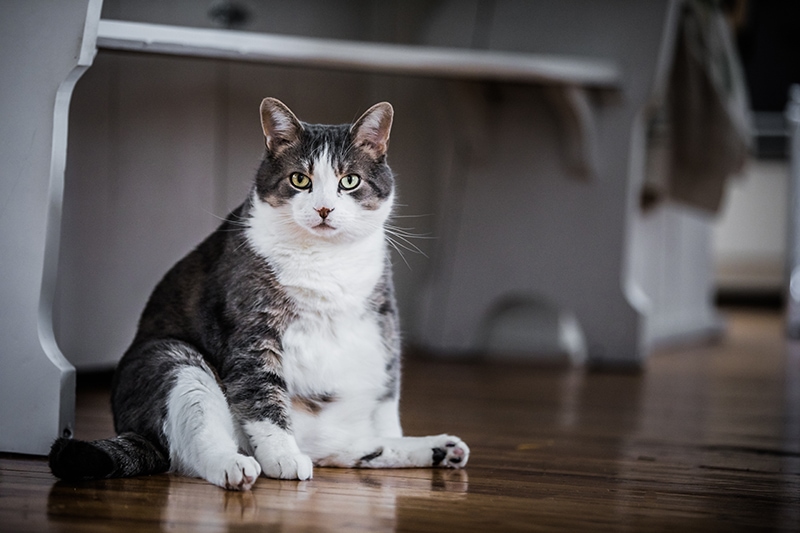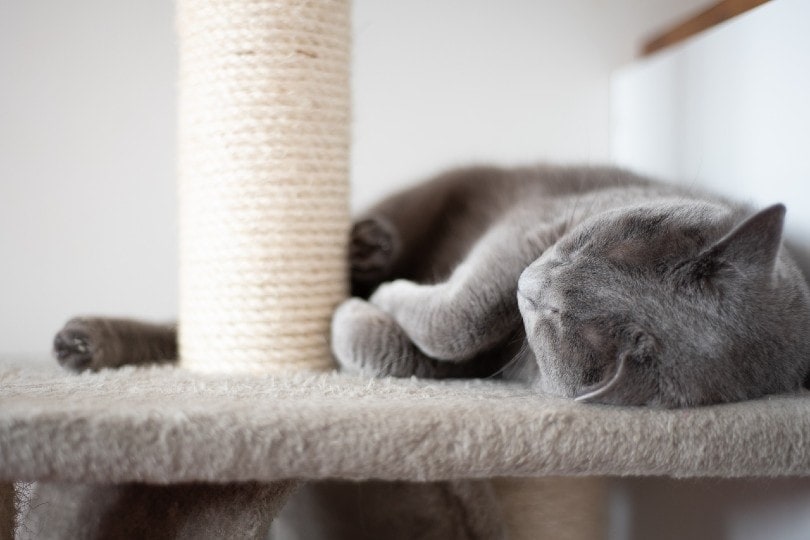Does a Feral Cat Purr? Feline Habits & Behavior
By Beth Crane
Updated on
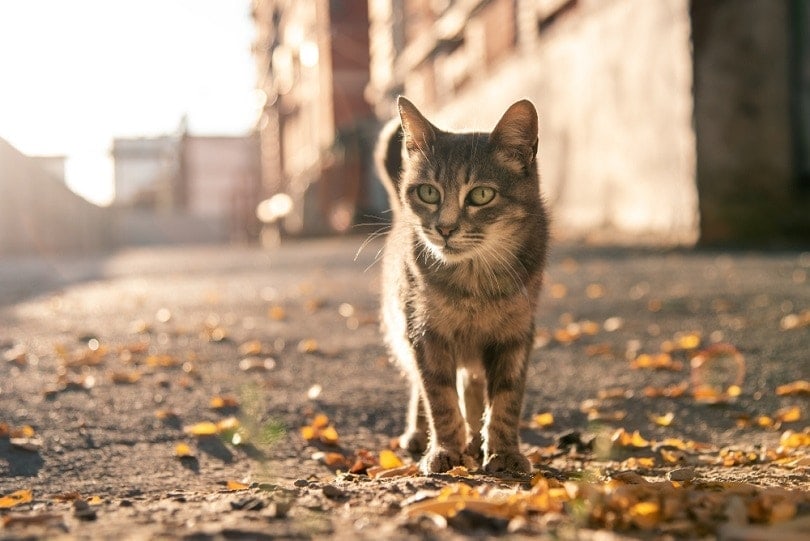
When we think of feral cats, we often think of a cat scared and alone, living on the streets. However, this isn’t always the case; many feral cat colonies thrive because of their natural affinity for hunting and adaptation to communal living. Do feral cats purr? The answer is sometimes, but it’s actually more unlikely than you might think.
Feral cats can physically purr as they are the same creatures as the domesticated cats that crowd our laps and rub against our legs. However, they might not purr as often as house cats (or even stray cats) for several reasons, including following instructions from their mothers as kittens.
 Why Would Feral Cats Purr?
Why Would Feral Cats Purr?
Feral cats might choose to purr (or reflexively purr) for various reasons, despite not doing it often. Placating purring behavior can sometimes be seen in feral cats living in groups, particularly if they want to convey peacefulness. This can also be seen when the cats play together.
Mother cats might also purr to their kittens, giving them a reassuring sound and vibration to soothe them. Kittens also instinctively purr, even at only a few days old, communicating to their mothers where they are. However, a feral mother cat might also instruct their kittens not to purr, as purring is noisy and might alert predators to the location of a vulnerable cat and her nursing kittens.
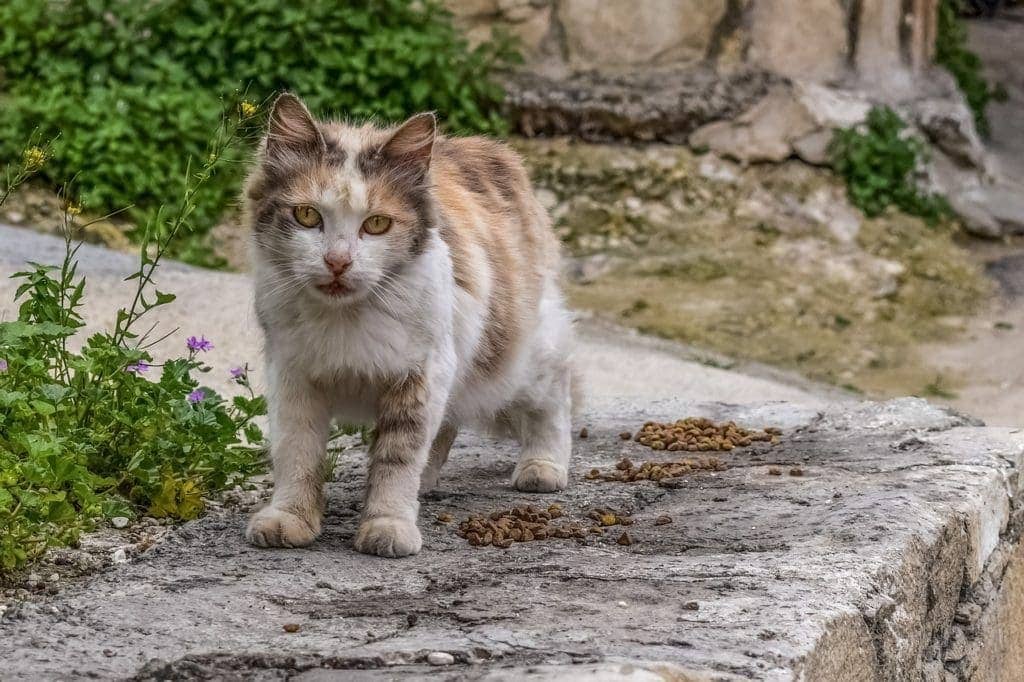
Why Do All Cats Purr?
Cats purr for many reasons. We often think of a cat purring in contentment and happiness, and they often do! But sometimes, cats will purr for the complete opposite reason. Cats have been seen in studies to purr when in pain or distress. Cats can purr to soothe themselves if they’re stressed or frightened and can also purr when in pain.
A cat’s purr vibrates at a range of 25–150 Hz, the same oscillation that can heal bones and soft tissue. This healing frequency has been proven in studies,1 showing that bone healing can occur between 20 and 50 Hz, and soft tissue damage can be mediated at 100 Hz. Some cats have also been seen to purr when they’re dying, suggesting that they purr as a coping mechanism, comforting themselves as they pass on.
Interestingly, domesticated cats can change the pitch of their purr to convey their desires and emotions. For example, cats soliciting affection might rub on their owners and purr deeply and happily. Cats that want their dinner might purr at a higher pitch; since humans will biologically respond to a babes cry, it’s thought that cats latched onto this and adjusted their purring (along with other sounds). Higher-pitched and more desperate purring means our cats get fed faster, so it must work!
Can Feral Cats Show Affection?
Feral cats can show affection, but it’s likely that they’ll only show it to other familiar cats if they’re truly feral. Feral cats will usually perform behaviors necessary for survival around humans, as we’re an unknown (possibly hostile) thing to them.
Many feral cats consider interaction with humans as very risky. Associating with people or even being around them can be stressful for feral cats, especially if they’re approached or touched by people when they can’t escape. Over a long period, trust can be built, but a feral cat won’t show affection like a house cat (or even a rehabilitated stray cat) would.
Feral cats differ significantly from owned cats; their behavior can seem unpredictable. For example, feral cats will likely ignore any attempt by people to interact with them or show affection, such as offering them toys or food. Conversely, if an unowned cat approaches with curiosity and seeks affection, they’re likely a stray cat instead of a truly feral cat.
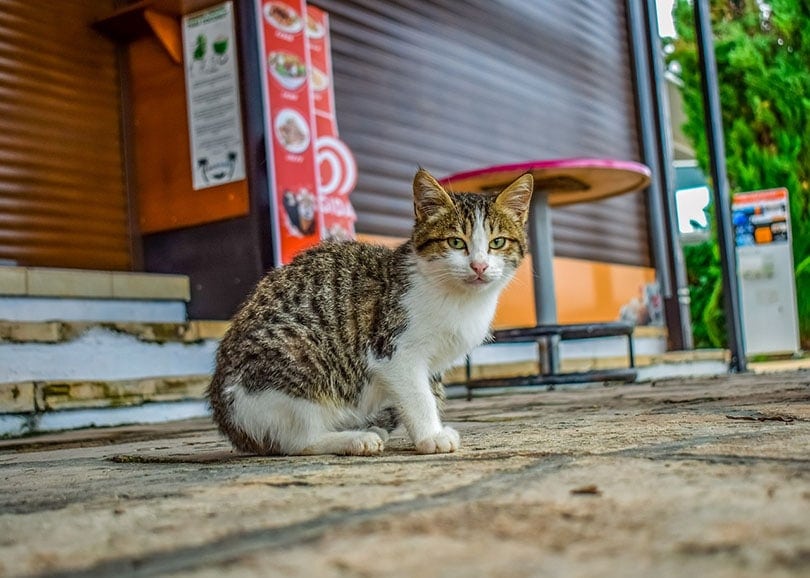
What Is the Difference Between an Owned, Stray, and Feral Cat?
There are differences between owned and stray cats and significant differences between feral and owned/stray cats. Owned cats are completely domesticated and bonded with their owners. They’re used to interacting and living with people, including giving and receiving affection. Stray cats have previously lived with people and now find themselves on the street. They are familiar with humans and sometimes show affection or seek food and comfort from them.
Stray cats can be “rehabilitated” and integrated back into a loving home. Feral cats have never lived with people and don’t have any interaction with them. Feral cats can be likened to wild animals, as they are not used to humans and will be fearful and very stressed when interacting with them. They nearly always prefer to run from people, and it’s doubtful that any feral cat will ever be able to live indoors happily (unless very young kittens are socialized with people properly).
How Can You Tell if a Cat Is Feral or Not?
Besides observing the cat sleeping outside and its general body condition, behavior is the best way to distinguish a feral cat from an owned or stray cat. Body language and behavior are vital to determining the difference between them, as both stray and feral cats will (usually) have very different reactions to a human presence.
If a feral cat is approached or cornered by a person, it’ll likely be terrified. Fearful behavior such as crouching, hunching, puffing up their fur, avoiding eye contact, lip licking, and crying can be observed, as can aggressive behavior such as yowling, spitting, and hissing. On the contrary, while some stray cats can display the same behaviors if they’re fearful of people, most will have some prior positive experience with humans. For example, stray cats might approach a person with a curious trill, their tail raised in curious greeting, and may rub up against their legs, seeking affection.
If food or toys are left out for cats living on the streets, and people stay close by, feral cats are more likely to ignore them (as it’s seen as a risk to get closer to people), whereas strays are more likely to play with and eat them.
 Conclusion
Conclusion
Feral cats can purr and may use it for various reasons. While most domesticated cats purr when they’re happy and contented, cats can also purr to self-soothe when stressed or in pain. Some feral cats can purr more or less than others depending on what they learned from their mothers. Some mother cats might dissuade their kittens from purring as (while it’s a natural behavior) it can create noise and attract predators to their location.
Featured Image Credit: Gansstock, Shutterstock
 Why Would Feral Cats Purr?
Why Would Feral Cats Purr?
